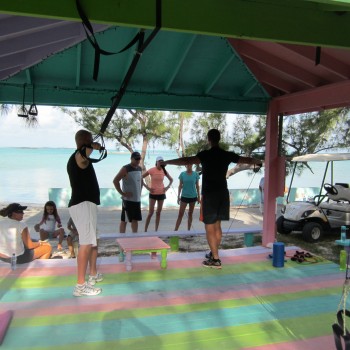Staying Active
|
Specialties
|
Training Locations
|
|
Certifications
|
|
Personal Trainer Overview
As a specialist in Exercise Therapy, I also train clients, of any age who are post-rehabilitation and have been discharged from a physical therapist or chiropractor.
Training Philosophy
- Never allow anyone to go home and be too sore to exercise to some extent the following day.
Ground Based Training-
Daily activities take place standing upright on your feet. When walking, the legs and muscles of the core are used to control your body. Strength training exercises should take place in varying standing positions and angles to prepare your total body for the obstacles we encounter while on your feet.
ex) Suspension training allows you too keep your feel on the ground while going through many pushing, pulling, and rotational movements at different angles/intensity.
Multi-Joint Training-
It is important to use multi-joint movements in order to use many muscles in a single exercise. There will be 1 or 2 primary mover muscles and can include 5+ stabilizing muscles. The more muscles used, the more efficient the exercise. The joints of body needs to learn where and when to be stable and mobile.
ex) quoting Mike Boyle "Ankle is for mobility, knees are for stability, hips-mobility, lumbar spine(lower back)-stability, thoracic spine (upper back)-mobility, scapula-stability, glenohumeral (should joint)-mobility"
Training in multiple planes-
Your body has to react/respond and stay in control to overcome forces in all planes of motion; therefore, training should take place in all three planes to prepare for the activities of you daily life (ADL's).
ex )pushing with one arm while pulling with the other, all while keeping the lumbar spine stable
Unilateral Training-
Many daily movements take place using one limb at a time, as with walking- one foot is supporting as one is moving. Unilateral training can help correct imbalances between both sides of the body, challenge the stabilizing muscles and the stability/mobility of the joints included in the movement. Unilateral training helps to enhance the neuromuscular system involving single limb movements.
ex)single arm rows or single arm overhead dumbbell press.
Functional Training-
The goal is to incorporate strength/stability training exercises that will transfer to an improved ability to partake in all activities of daily life and keep you active and enjoying the increase of your active life-span.
